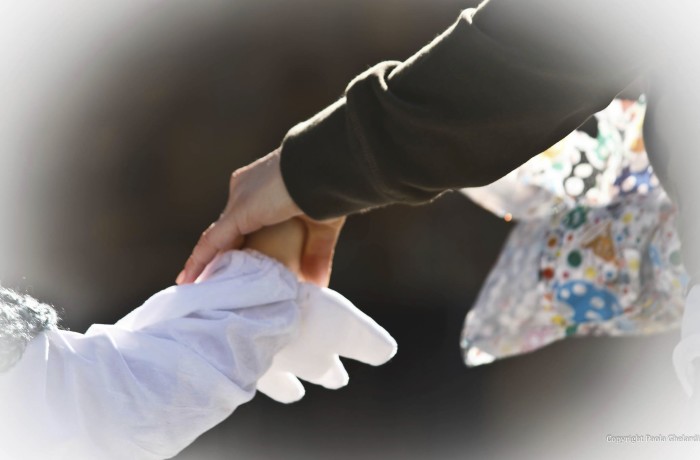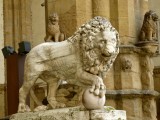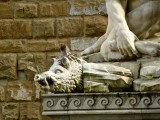FAMILIES
Let’s discover Florence
A stroll along Florence’s streets to discover its secrets while listening to captivating stories. This guided tour is designed especially for children, so they may learn about the city in a fun way.
The Uffizi Gallery
The masterpieces displayed inside the Uffizi explained in such a way as to enthrall adults and children alike. Enjoy hearing about the important people and listening to the anecdotes relating to each work of art.
Palazzo Vecchio
A visit of Palazzo Vecchio, once residence of the Medici family, to learn about life at court and its secrets.
EDUCATIONAL GUIDED TOURS FOR SCHOOL GROUPS
Florence during the Middle Ages
From the Religious Center (Baptistery of St. John the Baptist, Cathedral of Santa Maria del Fiore, Giotto’s Campanile) to the Political Center (Palazzo Vecchio, on Piazza della Signoria), the group will be led through the district where Dante Alighieri lived and where some medieval tower houses stand – the ideal environment to learn about daily life in the Middle Ages and the typical crafts and trades of those times.
The walking tour also comprises the Franciscan Basilica of Santa Croce, which houses the Bardi Chapels frescoed by Giotto and the monumental tombs of Michelangelo and Galileo, and the Santa Croce quarter, Florence’s renowned leather district. The tour will end with a visit to the Bargello Museum, where sculptures by Donatello and Michelangelo are displayed.
Florence in the Renaissance
The focus of this tour is Renaissance architecture and the included sites are: SPEDALE DEGLI INNOCENTI, DOME OF THE CATHEDRAL, UFFIZI BUILDING, and PITTI PALACE
The itinerary begins at the Loggia of the Spedale degli Innocenti, continues to the cathedral to see Filippo Brunelleschi’s dome, then to the edifice which houses the Uffizi Gallery, and ends on the opposite side of the River Arno, on the largest private plaza of the city, Piazza Pitti.
Painting and Sculpture in Renaissance Florence: UFFIZI GALLERY, PIAZZA DELLA SIGNORIA, and ACADEMY OF FINE ARTS GALLERY
Visit of the Uffizi Gallery to see paintings by Masaccio, Piero della Francesca, Filippo Lippi, Botticelli, Leonardo da Vinci, Michelangelo, and Raphael. Explanation of the sculptures in Florence’s open-air museum: Piazza della Signoria. Visit to the Academy of Fine Arts Gallery to see works by Michelangelo: the David and the Prisoners.
Michelangelo and the Medici Family: MUSEUM OF THE MEDICEAN CHAPELS, PALAZZO MEDICI RICCARDI, and THE ACADEMY OF FINE ARTS GALLERY
Visit of the Museum of the Medicean Chapels, which are part of the Laurentian complex: Crypt, Medici Family Mausoleum, and New Sacristy. The architecture, decorations, and sculptures are works by Michelangelo. On our way to the Academy of Fine Arts Gallery, to see Michelangelo’s famous David and the Prisoners, students will have the opportunity to admire and learn about the architecture of Palazzo Medici-Riccardi.
A comparison between the Quattrocento and the Cinquecento, Donatello and Michelangelo: BARGELLO MUSEUM and BASILICA OF SANTA CROCE
Visit to the Bargello Museum, which houses the statue of St. George and the David by Donatello and Michelangelo’s Bacchus, early works of the Florentine Renaissance. Visit of the Basilica of Santa Croce to see Donatello’s Annunciation and Michelangelo’s tomb.
The Medici and Science: PALAZZO VECCHIO and GALILEO MUSEUM
Visit of Palazzo Vecchio, comprising the Salone dei Cinquecento, Francesco I of the Medici’s study, the Quartieri Monumentali, the Halls of the Granduchess Eleanor of Toledo, the Hall of the Geographical Maps, and the 95-meter-tall Arnolfo Tower (which affords sweeping views over the city). The visit of the Galileo Museum focuses primarily on Galileo’s scientific instruments (his researches were sponsored by the Medici Family).
Life at court and Renaissance frescoes: PALAZZO PITTI and BRANCACCI CHAPEL
Visit of the Palatine Gallery to see paintings by Raphael, Titian, Andrea del Sarto, and Caravaggio, displayed inside the beautifully-frescoed reception halls of the Medici Family. The visit will also include the Royal Apartments. Students will be led through the narrow streets of the picturesque Santo Spirito district to reach the Basilica of Santa Maria del Carmine, which houses the Brancacci Chapel – an early-Renaissance jewel.
ACCESSIBLE TOURISM
Guided tours of Florence for visually impaired people
A STROLL THROUGH THE HISTORIC CENTER OF THE CITY - 4hrs (2+2)
Meet-up and departure from Piazza della Repubblica, the forum during the Roman era and the heart of the modern, international city. The bronze tactile city map installed in this plaza will be our aid for introducing the fascinating story of Florence.
The Religious Center of Florence is only a few steps away from Piazza della Repubblica. The highlight here is the Cathedral of Santa Maria del Fiore and its bell tower, known as Giotto’s Campanile, clad with weather-worn, multi-colored marble. We will enter the cathedral to perceive the grandiosity and magnificence of its architectural structure by tactilely exploring the columns.
The Church of Orsanmichele stands on the main street, which connects the cathedral to the political heart of the city and is dotted with all sorts of shops. Orsanmichele was the first sanctuary consecrated to the Virgin Mary. Inside, we can perceive the intimacy of its religious ambiance along with the authentic character of an ancient city of merchants and bankers.
We will continue our stroll to reach the nearby, sun-filled Piazza della Signoria, the city’s ancient political center. This plaza is like an open-air museum, because it is embellished with statues and the beautiful Fountain of Neptune. The gurgling of the water from this fountain will stay with us until we begin making our way to Ponte Vecchio, the old bridge of Florence flanked by goldsmith workshops and jewelry shops, with their original 16th century wooden shutters.
The famous Mercato del Porcellino is only minutes away. Once the place where financial transactions were made, this little market today sells a wide assortment of souvenirs and typical products. Surrounded by the voices of clients and merchants haggling over the price of leather bags, scarves, T-shirts, and Pinocchio puppets, we will be able to touch the good-luck fountain of the wild boar, which gives the name to the market. Our tour will end only a few steps away, at Piazza della Repubblica, where it began.
This circular itinerary can easily be divided into two parts, one to be carried out in the morning and the other in the afternoon, with a restoring lunch break in between.
THE CATHEDRAL MUSEUM
Florence’s religious center (Baptistery, Cathedral, and Campanile).
Analysis of the three religious buildings from a historical, artistic, and architectural point of view.
Tactile exploration of the scale model of the buildings that stand on Piazza San Giovanni and of some thermoform surfaces molded to imitate the main architectural elements, such as the decorative tiles of the Baptistery.
The Pietà of Santa Maria del Fiore, by Michelangelo (scale reproduction)
Tour participants will have the opportunity to touch a few original works.
VISIT OF FLORENCE’s MAIN MUSEUMS: UFFIZI GALLERY, ACADEMY OF FINE ARTS GALLERY, and BARGELLO MUSEUM
Historical and artistic itinerary of the chosen museum, with a focus on the tactile discovery of some original works and 3D reproductions.
BOAT TOUR ON THE RIVER ARNO WITH THE “RENAIOLI” (1hr)
The small boat of the “Renaioli d’Arno” in which participants of this tour will be comfortably seated is the same one used over the centuries to gather, load, and take to shore the sand of the shallow river bed. That sand was used to make the mortar employed in the construction of towers and also the plastering of Florence’s palaces. The river was valuable for other reasons too, if we think of the great amounts of marble, wood, wool, silk, and spices that were brought to Florence on barges, which sailed upstream against the current, towed by oxen.
All this and much more will be explained to tour participants during the boat tour, which will cover the section of the river between the modern bridges, Ponte alle Grazie and Ponte alla Carraia, taking us under the ancient Ponte Vecchio and Ponte Santa Trinita.











